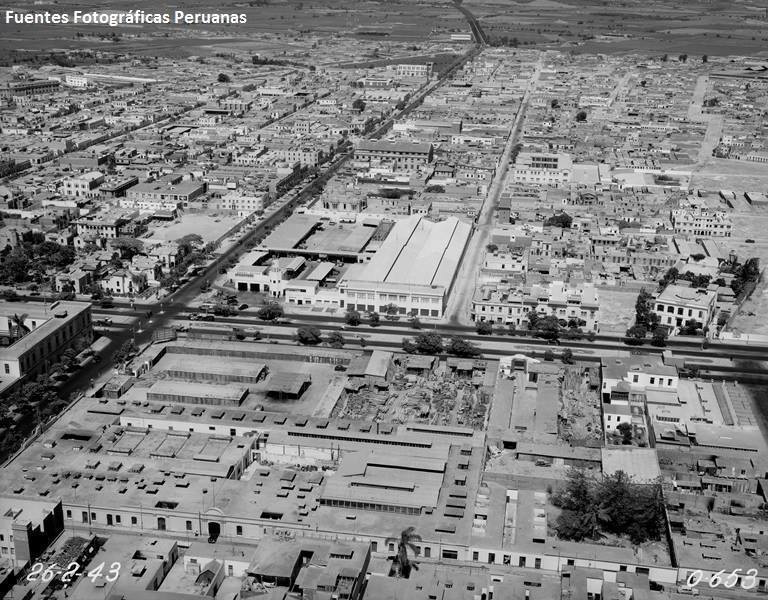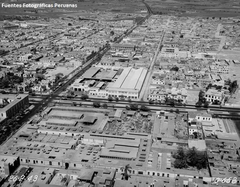
Casa del Pueblo Lima, Peru: Visiting Hours, Tickets, and Comprehensive Visitor Guide
Date: 15/06/2025
Introduction
Casa del Pueblo in Lima, Peru, stands as a powerful emblem of the country’s political, social, and cultural history. Serving as the headquarters of the Partido Aprista Peruano (APRA), it is more than a building—it is a living monument to 20th-century social movements, labor rights advocacy, and democratic reform. Its history, architectural style, and ongoing role in Peru’s civic life make it a must-visit site for anyone interested in the nation’s past and present (Wikiwand; Wikipedia).
Table of Contents
- Introduction
- Historical Overview
- Architectural Features
- Political and Social Significance
- Key Historical Events
- Visitor Information
- Symbolic Elements and Rituals
- Institutional Structure and Educational Role
- Ongoing Legacy
- Frequently Asked Questions (FAQ)
- Summary and Next Steps
- References
Historical Overview
Founded as the headquarters of APRA in the early 20th century, Casa del Pueblo is deeply intertwined with Peru’s modern political development. Originally located at Calle Belén 1065 near Plaza San Martín, the current building on Avenida Alfonso Ugarte was acquired in 1948 through a major grassroots fundraising campaign led by Víctor Raúl Haya de la Torre, the party’s founder. This effort reflected the party’s solidarity with the working class and marginalized communities (Wikiwand).
Architectural Features
Casa del Pueblo is housed in a traditional Lima “casona,” an architectural style blending colonial and republican influences. Key elements include:
- Robust masonry walls for earthquake resistance
- High ceilings and large windows for ventilation and natural light
- Central courtyard fostering community engagement
- Multipurpose halls and meeting rooms, including the grand “Aula Magna” for assemblies and public gatherings
The building’s façade features APRA’s colors and symbols, while inside, the inscription “Sólo Dios salvará mi alma y sólo el aprismo salvará al Perú” (“Only God will save my soul and only Aprismo will save Peru”) underscores its ideological mission (LimaEasy).
Political and Social Significance
Casa del Pueblo is inseparable from APRA’s evolution as a force for social justice, labor rights, and democratic reform. It has served as a center for political strategy, social services (including healthcare, education, and community dining), and public engagement, embodying the party’s grassroots philosophy (Wikiwand).
Key Historical Events
- Repression and Resistance: Casa del Pueblo has faced political repression, notably during President Fujimori’s 1992 autogolpe, when it was surrounded by military forces searching for Alan García.
- Funerals of Leaders: The building has hosted the lying in state for both Haya de la Torre (1979) and Alan García (2019), serving as a national site of mourning (El Comercio).
Visitor Information
Visiting Hours
- Typically open Monday to Friday, 9:00 AM–6:00 PM. Hours may vary during holidays or special events. Check official sources before your visit (Metropolitan Touring).
Tickets and Admission
- Entry is generally free. Some events or guided tours may require advance registration or a fee.
Accessibility
- The main entrance and public areas are wheelchair accessible, but some historic sections may have limited access due to architectural constraints.
Guided Tours and Special Events
- Guided tours are available by appointment, providing insights into the building’s history, architecture, and political significance.
- Casa del Pueblo hosts lectures, workshops, and cultural events—check the event calendar for opportunities to engage with local history (Spacio Libre).
Travel Tips and Nearby Attractions
- Located near Plaza San Martín and Lima’s historic center, Casa del Pueblo can be easily reached by public transportation or taxi. Combine your visit with nearby sites such as the Larco Museum and Lima Cathedral (Planetware).
Symbolic Elements and Rituals
Casa del Pueblo is rich in symbolism:
- Avenida de los Pañuelos Blancos: Supporters greet leaders with white handkerchiefs, symbolizing solidarity.
- Aula Magna: The site of important rituals and party anthems, and the center of commemorative ceremonies (Wikiwand).
Institutional Structure and Educational Role
The building houses APRA’s key administrative offices, the National Political Directorate, and educational spaces such as the National School of Oratory and the Antenor Orrego Pre-University Academy. These programs reflect the party’s commitment to political education and civic engagement (Wikiwand).
Ongoing Legacy
Despite facing attacks and political persecution, Casa del Pueblo endures as a hub for activism, education, and cultural preservation. It remains a living institution, adapting to the needs of its community and serving as a focal point for Peru’s ongoing quest for social justice and democracy (Boletoperu).
Frequently Asked Questions (FAQ)
What are Casa del Pueblo’s visiting hours?
Monday to Friday, 9:00 AM–6:00 PM, but check ahead for changes.
Is there an admission fee?
General admission is free; special tours or events may charge a fee.
Are guided tours available?
Yes, by appointment.
Is Casa del Pueblo accessible for people with disabilities?
The ground floor is accessible; upper floors may have limitations.
Can I take photos inside?
Photography is usually permitted in public areas, but always ask about restrictions.
What nearby attractions can I visit?
Plaza San Martín, Lima Cathedral, Larco Museum, and the city’s historic center.
Summary and Next Steps
Casa del Pueblo stands as a vibrant testament to Peru’s ongoing political evolution, social activism, and cultural resilience. Its historical and architectural significance, coupled with its central role in APRA’s legacy, make it an essential destination in Lima. Visitors can expect a free, enriching experience, with opportunities to join guided tours, attend cultural events, and explore the surrounding historic cityscape. To enhance your visit, consider using the Audiala app for audio guides and interactive maps, and stay connected through official channels for the latest updates.
Plan your visit to Casa del Pueblo and immerse yourself in the living story of Peru’s “house of the people”—a beacon of justice, democracy, and national identity (Metropolitan Touring; Planetware).
References
- Casa del Pueblo (Lima) – Wikiwand
- Casa del Pueblo, Lima – Wikipedia
- Casa del Pueblo (Lima) – Wikipedia Español
- Spacio Libre: Este es el APRA – Viendo al aprismo por dentro
- El Comercio: Muerte Alan García, Casa Pueblo bastión aprista crónica
- LimaEasy: Lima Historical Buildings
- Metropolitan Touring: Casa del Pueblo Lima
- Planetware: Tourist Attractions in Lima















































































































